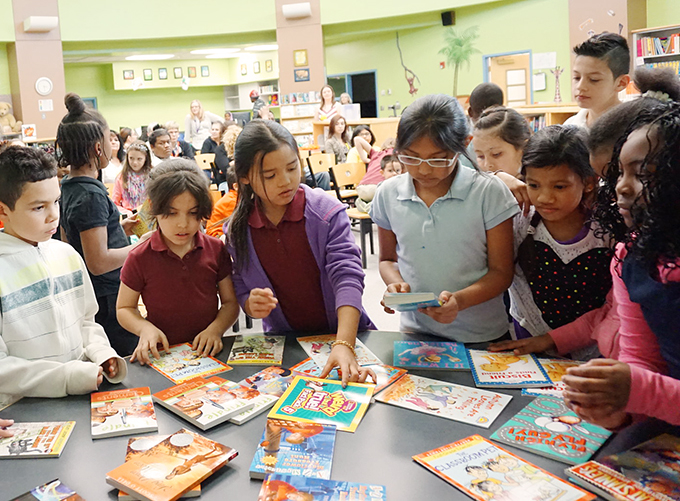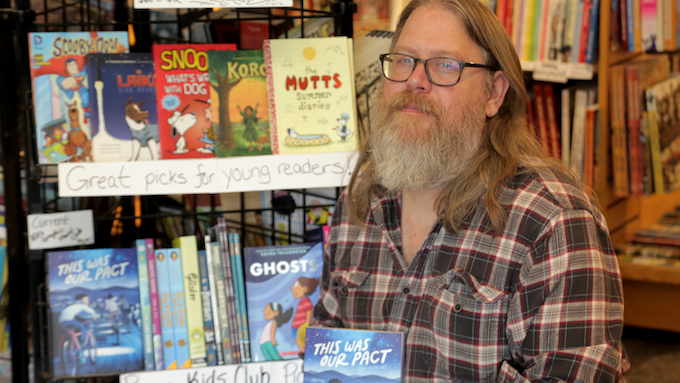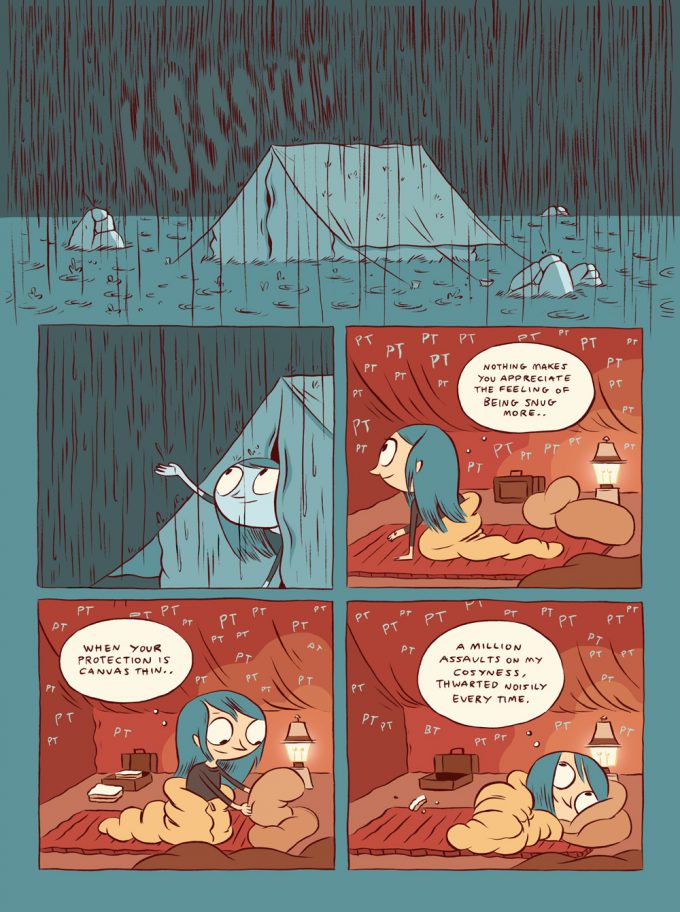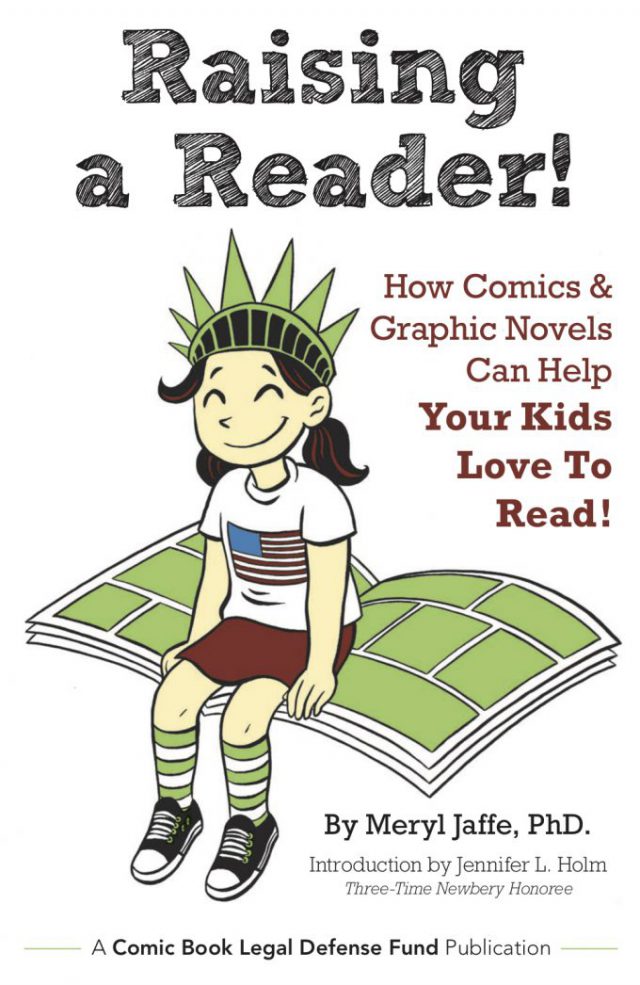July 22, 2019
How graphic novels can spark an interest in reading among kids

It can be difficult to engage kids in reading over the summer, especially if they have struggled with reading during the school year. In cases like these, creative solutions are in order. To that I say, have you considered graphic novels?
If you have a reluctant reader on your hands, introducing a new form of literature is an opportunity to experience the joy of reading from a new angle. If they haven’t found any prose texts that resonate with them yet, graphic novels are a whole different world of books with a completely different selection of childrens’ literature to choose from.
“What I find is that kids like reading graphic novels without any pressure from their parents to read,” says Brian Hibbs, owner of the Comix Experience bookstore in San Francisco. He goes on to say,
What I think the hard part for a lot of kids is the pressure to read and the pressure to read prose. It’s daunting when it’s put that way in front of you as a kid, whereas graphic novels are something that you’re reading for fun.
Brian Hibbs at the Comix Experience
If your little one is in the early stages of learning to read, prose can be intimidating. While learning to read prose is an important part of any student’s development, it’s also important to remember to find age and skill-appropriate texts that kids are excited to read. By sparking excitement and passion, kids can grow to become lifelong readers.
Do graphic novels even count as “real” reading, though?
Oh, they most certainly do!
Critics would say that the experience of reading graphic novels is just a simplified version of “actual” reading and that comics don’t come close to the complexity of “real” books with long paragraphs of prose and no pictures.
Carol L. Tilley, librarian educator and children’s literature professor at Illinois School of Information Sciences, would argue exactly the opposite.
“If reading is to lead to any meaningful knowledge or comprehension, readers must approach a text with an understanding of the relevant social, linguistic, and cultural conventions… if you really consider how the pictures and words work together in consonance to tell a story, you can make the case that graphic novels are just as complex as any other kind of literature.”
The pictorial nature of graphic novels does not diminish its complexity at all. In fact, it makes that complexity more approachable. This encourages developing readers to become sophisticated, visual thinkers, all the while, engaging multiple areas of the brain at once while reading.
As a matter of fact, Reading Partners’ program uses picture books to teach fundamental reading skills to our elementary-aged readers of all levels. We encourage them to look at the illustrations to predict what’s going to happen next in the story and improve their sequencing skills. Furthermore, looking at pictures helps readers understand the deeper and more complicated messages and meanings behind the text.
For example, in this excerpt from Luke Pearson’s Hilda and the Troll, a young reader can look to the progression of pictures and supporting text to learn that Hilda is stuck in a massive rainstorm. Then they can look closer at the expressions on Hilda’s face to understand that she enjoys the sound of the rain, nonetheless.
An excerpt from Hilda and the Troll by Luke Pearson
Kids can also look to the illustrations in search of clues to understand unfamiliar vocabulary or metaphorical prose. When Hilda thinks, “a million assaults on my cozyness, thwarted noisily everytime,” we can look at the picture to see evidence of the rain hitting her tent while she remains cozily snuggled inside. From that evidence we can make the connection that the rain is what threatens to assault her cozyness.
“There’s a way that you read [comics] that’s different from when you’re reading normal prose,” says Hibbs, “the way you process it is different because the audience is involved in the work itself… In graphic novels, you control the time and the pacing of what you read. It’s really common to go back three or four panels or three or four pages even to read a sequence again. You don’t do that as often in other mediums. You’re communicating with the pages in graphic novels. That level of participatory behavior is what I think is the key thing that makes it different from other media.”
The key is the gutter, or the spaces between the panels. These spaces offer natural breaks for the reader to pause and make sure they understand everything that’s happening in the story. With these natural points of “checking in” with the reader, the experience of reading becomes more collaborative, making graphic novels great read aloud material for you to bond with your child.
Comics can be a new way for children to explore their interests
Comics are more than superhero stories and manga, nowadays. There’s never been a greater variety of fiction and nonfiction stories from a diverse cast of voices to choose from. Find a coming of age story set in a fantasy land, a nonfiction story about the rise of a sports hero, or a story about life in a marginalized identity—if its a genre that resonates with your young reader, it’s out there. Be it through graphic novels or prose text, books are a meaningful way for children to explore their interests.
Young readers are developing human beings discovering both the world and themselves through stories and learning. Opening them up to the vast, diverse world of graphic novels is opening them up to a whole new world of possibilities to figure out what they’re into. In raising a reader, it’s important to work together with your little one to find reading material that speaks to them. In his parting words, Hibbs says,
To me, the greatest reason to get enthusiastic about kids reading graphic novels is because kids are already enthusiastic about them.
With all that in mind, it might be a good idea to support a local comic book store near you or ask your local library where to find their graphic novel section to find something that speaks to your young reader’s sensibilities. From paperbacks to digital subscription services such as Comixology, there’s never been more ways to find new comics. Alternatively, if graphic novels aren’t speaking to your kid , we have more ideas and tips on how to get kids engaged in reading over the summer.
Otherwise, the Comic Book Legal Defense Fund has an amazing pamphlet with even more in-depth information on how you can use comics to get your kids into reading. They even includes a comprehensive reading list of educational graphic novels to get you started. Hibbs recommends reading Sheets by Brenna Thummler and This Was Our Pact by Ryan Andrews. I just picked up Pilu of the Woods by Mai K. Nguyen, and I’m absolutely loving it.














